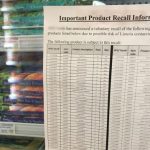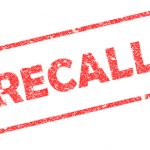FDA has issued a final guidance that reviews the situations in which a company should warn the public about a voluntary food recall. This includes the appropriate timeframe for issuing the warning and what information a company should include in the warning. The guidance, “Public Warning and Notification of Recalls”, also discusses when the FDA may decide to take action to issue a public warning, should one that a company issues is not sufficient.
In an agency statement, FDA Commissioner Scott Gottlieb, MD., also addresses the buzz around folks feeling that there have been more recalls. “In actuality, for fiscal year 2018, there were a total of 7,420 recalls with 831 that were classified as the highest risk. That figure represents a five-year low in recalls. However, the reason why recall notices might seem to have increased is that our publicizing of these events has become more prominent,” said Gottlieb. “We’re routinely providing more information on recalls and other safety issues that have happened.” He added that the ability to detect, track and trace product issues has improved with the help of technology, including whole genome sequencing.
“Our labs are currently testing cutting-edge technology that can screen for multiple allergens simultaneously and even technology that shrinks the genetic testing of pathogens from machines that were once the size of an entire room to a device that’s smaller than many smart phones. We’ll also be working to improve product traceability by tapping into modern approaches, such as blockchain technology, to further advance our mission of protecting public health.” – Scott Gottlieb, M.D., FDA
In addition, the agency is looking at how new technologies can be used notify consumers about whether a product they purchased has been recalled.










